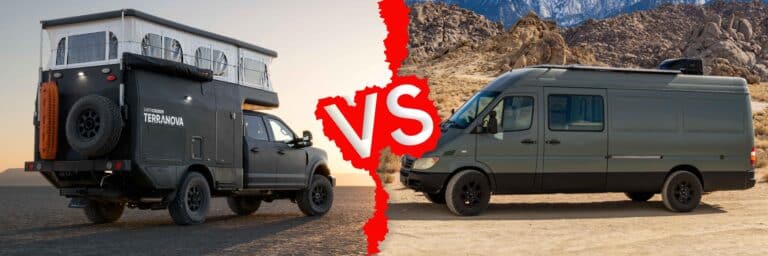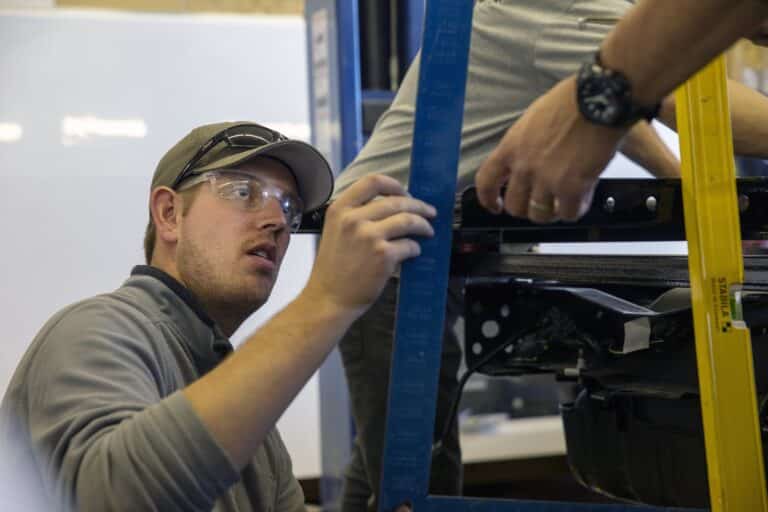Chances are, if you’re reading this, you’re likely no stranger to overland travel. While we’re all drawn to adventurous endeavors, not everyone is keen finding new horizons amid winter’s deep snow and freezing temps. In this article, we will aim to convert the winter-adverse crowd by taking a look at the unique design and engineering aspects of EarthCruiser vehicles that solve the “winter worries”.
The Allure of Winter Overlanding
Winter is one of our favorite seasons to seek adventure. First off, there’s a lot less people “stupid enough” to go overlanding in the winter than in the warmer months. We’re very grateful for these wise soles. Their wisdom allows the rest of us idiots to fully indulge in our slightly-introverted selves and visit some of our favorite places with no crowds, no noises, no nothin’. For many of us, there is nothing more rejuvenating than enjoying a warm beverage amongst the snow-covered wonders of nature.
On the other side of this spectrum are our favorite winter places that are ridiculously crowded. You guessed it, ski resorts. If you ski or board of any kind, you know the early bird gets the worm. Being able to get there no matter the road conditions and stay there no matter the weather conditions is, in our humble opinion, truly remarkable.

Four-Season Engineering
So, what makes an EarthCruiser vehicles capable of withstanding winter’s harshest harshness? It starts with ensuring all vital systems of the rig (water, electrical, and plumbing) are engineered in a way that protects them from becoming compromised in below freezing weather. Let’s dive in to see how this works.
WATER
In all EC vehicles the water tanks are positioned inside the house the heavily insulated. This keeps the water tanks from being exposed to outside temps and utilizes the climate-controlled interior air to keep them protected from freezing.
ELECTRICAL
All electrical systems are stored inside the temperature-controlled house, including the battery banks. A system of vents then circulates the climate-controlled air around the electrical components protecting them from frigid temps. This may seem like an obvious step, but we still see other “expedition trucks” with externally placed electrical systems. It can’t be understated as to how important keeping your batteries thermally regulated is for maximizing their lifespan and performance.
PLUMBING
Much like our water system, all plumbing lines in EarthCruisers are meticulously placed to keep as much of them inside the house as possible. All exposed plumbing lines are insulated and wrapped with thermal regulated heat tape to ensure line temperatures stay above freezing, including grey-water dump lines. Since there are no black-water tanks, there’s no need to worry about frozen “other stuff”. If you want to hear horror stories from overland or RV travelers, find someone who’s had to deal with a frozen black-water tank, yuck.

Keeping The Cold Out & The Heat In
Energy systems are a well-known core competency at EarthCruiser and a major part of our success in this field is our ability to insulate and control the interior climate of the house. The thermal properties of our triple layer, woven and vinyl coated pop-up curtain fabric minimizes unwanted air transfer, further optimizing the heating (and cooling) systems. This is the same material used for US Military and Red Cross field hospitals where climate control takes on a whole new level of importance. We recently caught up with EC owner Tom Hill who travels in winter temps down to 0 degrees F and when asked about the pop-up curtain performance in cold weather his response was simply, “It does great!”.
Not All Fuel is Created Equal
While we love the off-road driving experience of 4-cylinder turbo diesel powertrains found on early Fuso-built EarthCruisers, they aren’t ideal in freezing climates due to the diesel fuel thickening at low temps. There are additives that prevent this, but in the off chance it does happen, major problems and headaches ensue.
For the most part, gasoline powertrains alleviate these concerns. Gas doesn’t “gum up” like diesel in low temperatures. For most winter users, gasoline is hands down the preferred fuel choice as you typically don’t need to worry about it. However, gas can freeze in extremely cold sub-zero climates that reach below -60 degrees F. We recommend adding heat pads and thermal tape to your fuel supply system if you plan to visit regions with temps this low.

Traction That Keeps You Going
EarthCruiser’s come equipped with various configurations of four-wheel drive systems. The EXP and FX come standard with front and rear electronic locking differentials, allowing you to send equal power to all four wheels. Our Terranova model comes equipped with a locking rear differential and allows an option to add a front differential locker for maximum traction in soft surfaces. Your ability to crawl out of deep spots with all four wheels receiving equal amounts of power is rather mind boggling.
However, before you go locking up your diffs, you can’t overlook the importance of reducing your tire pressure to maximize tire traction. With our on-board air inflation systems you can easily reduce tire pressure and maximize your traction on soft and icy surfaces.
Experience Winter Confidently
Now that you know how EarthCruiser owner’s thrive in the cold-climate adventuring, we hope you feel more confident to explore in a house-on-wheels all year long. If you have any further questions regarding EarthCruisers or winter overlanding, reach out to sales@earthcruiser.com or shoot us a call at 541-706-9101.










